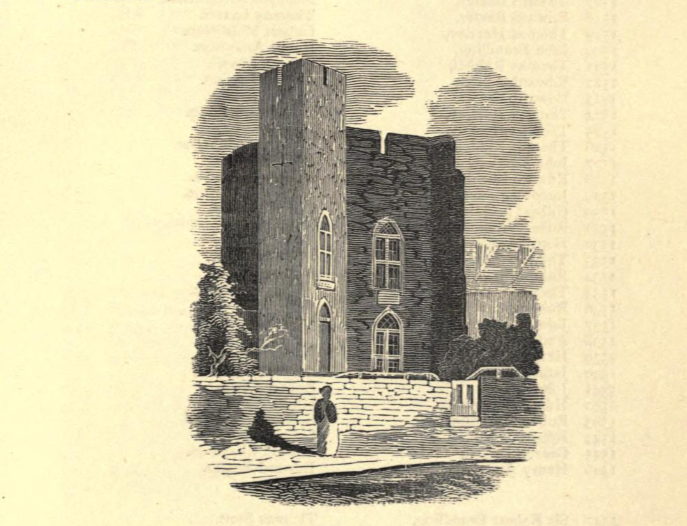
Newcastle
Carliol Tower
Last Updated:
11 Jun 2025
Newcastle
This is a
Town Defences
54.974732, -1.609715
Founded in
Current status is
Demolished
Designer (if known):

Replaced by the Free Library
Blackett Street forms the boundary of the original town. South of the lane was in, and Northumberland Street was out. The library site was the north eastern extremity of the wall, and thus a corner tower stood here. It was called the Carliol Tower, named after a family of rich 13th century merchants who lived nearby. Their name was also gifted to the Carliol Croft, which was the largest open space within the town boundaries which had orchards and gardens - certainly where the towns gentry would frolic about.
It was built in the medieval period, possibly around the 1330s which was when Nicholas de Carliol was mayor. Similar to the other towers it was semi circular, but was 2 storeys in height and interestingly featured a smaller tower. It played in integral role in the defence of the city and is thought to have seen action in the 1644 siege, when the Covenanters attempted and ultimately succeeded in storming the town and keep. Cannonballs and skeletons were found in a ditch nearby.
It was later repaired and reconstructed a number of times, most notably by the weavers company who were one of many merchant groups in the city (hence there being a Carpenters tower, Cutler tower, Plummer tower too etc). They probably used it for meetings and the like. In the early 19th century it was also used as a school, with the teacher "apparently" reached the age of 120 before dying in the building in 1804. I'm a bit sceptical like.
Demolition was mooted in the 1870s, and it was incredibly controversial amongst the townsfolk. It was noted to be in "excellent preservation", "no obstruction or inconvenience" and had "resisted the ravages of centuries...a monument to those men who were the stern upholders of the rights and privileges of the grand old town". Thomas Oliver Jnr, who we've mentioned a number of times, put forward a plan to build a Mechanics Institute here which would preserve the tower and simply build around it, and it was his opinion for it not to be removed. The debate raged on for a while, until ultimately Newcastle's first Free Library was constructed. A beautiful building itself, but in turn sacrificed one of Newcastle's great medieval landmarks.
As I say countless times, cities are living breathing things. Many dispute the old library being demolished due to its beauty, but it in turn meant the clearance of buildings like this. We should always see the townscape contextually, and I do lament such a loss - it's like something happening to the Plummer Tower today.
During construction of New Bridge Street, it is said the foundations of the tower remained. I don't know if it's still there though.
Listing Description (if available)


Here's a few plans of New Bridge Street surveyed in the 1850s and 1890s. The interesting feature is Carliol Tower, shown as an extant building near the Mechanics Institute and as a footprint on the later town plan.
Now New Bridge Street has changed entirely, especially with the development of John Dobson Street which sliced through the site of the old Free Library. It was once conjoined with the Laing which is why its side elevation is relatively modern. There's still a number of features which remain such as the Higham Place entrance of the Laing, the Lying in Hospital and John Dobson's residence.

Some half a century later much of the street remains, though New Bridge Street station has evolved into a goods station with the passenger complex becoming Manors. John Dobson's residence is now part of the front entrance to the Oxford Galleries extending across the whole of the former rear gardens surrounded by warehouses. Carliol Tower is still shown as part of the town wall defences imprinted as an overlay

The site of the Free Library and Carliol Tower in the direct foreground. Taken in May 2025

Carliol Tower in the 1880s, with the Mechanics Institute on the left which acted as the temporary free library. It was later embedded into the new build. Source: Newcastle Libraries

Carliol Tower, etched by Thomas Miles Richardson around the 1820s. There are multiple versions of this illustration.
